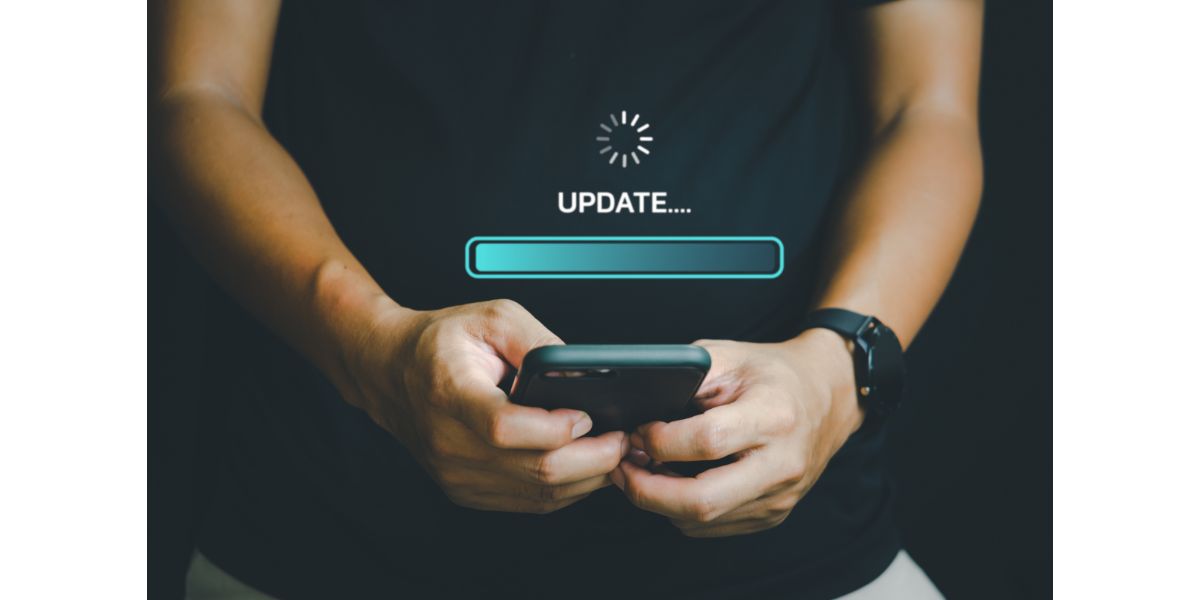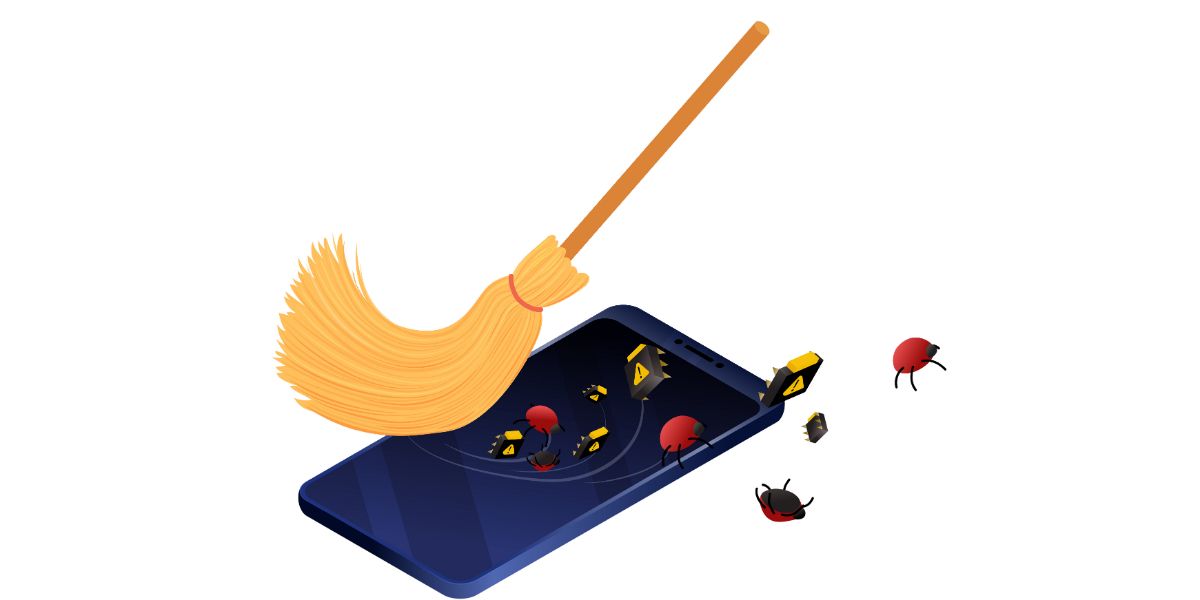Disclaimer: This post may contain affiliate links, meaning we get a small commission if you make a purchase through our links, at no cost to you. For more information, please visit our Disclaimer Page.
If you hold an iPhone and an Android phone together, side-by-side, while looking at an identical app on both devices, you would not discern a difference. However, things are going on behind each app, in the background, that couldn’t be further from the same.
Unlike Apple Apps, Android Apps are always updating because Android is far easier to work with for developers. Plus, developers have all the things they normally do going on much faster and more regularly than what you see on an Apple device.
There are a number of factors to consider when it comes to the speed of app updates going on, so we’ll spend some time on each one and cover the why and what-for so you don’t have to go digging through Google for a less reputable source of info!
Table of Contents
What’s With the App Update Frequency on Android Devices?
One of the first things to consider is the immense competition between Samsung and Apple, the two behemoths of the smartphone industry. Fortunately, for Android users, Samsung has the upper hand in this ongoing war, since the Android OS is simpler to use and develop for.
1. Developers Find Android Easier to Work With
Since iOS updates have to jump through an immense network of approvals (and rejections) from Apple, updating Android devices is a simple matter of developers uploading each firmware update when it’s ready, increasing the frequency of updating apps on Android devices.
It also creates an environment where developers are willing to conduct incremental, very small fixes (you might call them tweaks) because these tiny fixes don’t have to go through a huge approval process.
When it comes to Apple, there’s no sense in making tiny little fixes here and there when it’s much easier to just compile everything for one large release. It works out great, in a way, for Android users because it means your apps are more stable more often.
If you don’t have to wait on a huge update at the end of the month and get incremental updates throughout the month, you have a more stable app running smoothly when needed. This one fact dictates the frequency of this list’s succeeding points.
Since everything is updated thanks to a simpler process, everything that developers do to keep their apps on the up and up proceeds at a faster clip.
Though it may be aggravating to see frequent updates at times, it does mean that the developer truly cares about the app and is willing to continue working on it.
2. Keeping Your Data Secure
There are often arguments over whether or not an iPhone or Android device (of any kind) is more secure. Regardless of the merits of each side’s argument, there’s no doubting the advantage of frequently updated apps.
Security is a big deal for most smartphone owners and it’s a growing concern as well. Fortunately, most app developers take security pretty seriously.
One of the advantages of seeing frequent updates is knowing that the app’s developers are filling in any holes in the defense architecture of the app.
Apps are always vulnerable and keeping your data secure, especially on apps where you submit your credit and debit card or banking information, is paramount. If a developer can’t keep your data secure within the framework of their app, they would lose their business quickly.
While most app updates feature the random bug fix here and there, you will frequently see security updates within the patch.
Security updates are often more frequent than other, small patches because infiltration methods are always shifting and changing tactics.
Being a developer for an app that holds a lot of user data means you have to constantly be on the defensive, reacting to every new exploit and loophole that comes your way. The moment you slip up, you could lose hundreds, if not thousands, of customers.
If you’re interested in tips for keeping your Android safe, a Youtuber named “Techlore” has a fantastic guide.
3. Your Feedback Dictates Frequency As Well
If one thing is the beating heart and soul of the retail industry, it’s that the “customer is always right.” Like any business owner providing a service, the developer always has to convey assurances to the customer and provide what the customer wants.
The more user feedback that rolls in, the more likely a developer will take and act on the feedback. This is especially true if the app lacks a feature in high demand. The higher that demand rises, the more likely developers are to answer the call.
For that reason, customer feedback drives the rate of patches and additional content releases. If there is a high demand for a particular app with thousands or even millions of downloads, you can bet there is a ton of consumer feedback.
The more feedback there is, the more you can expect frequent updates to a particular app.
4. Developers Introduce New Features
Again, this can be done far quicker on phones that run Android than it can on iPhones. The Google Play Store adds about 1,300 new apps per day.
That sounds like a lot but something else is going on as well, flying under the radar for the most part, and that’s new feature releases.
When it comes to gaming on PCs or consoles, we typically call it DLC. But for mobile devices, it’s just termed additional content or something similar, for the most part. For instance, Call of Duty Mobile constantly adds and pulls features as each season progresses.
When they release a new season, we simply call it a “season.” Five years ago, the same release on a console or PC would be DLC.
Whatever you want to call it, certain apps that developers release are always ripe for new content. This is definitely true on the gaming side of things.
5. Android Updates
Android updates on a fairly regular basis, just like Apple does. Of course, the apps developers provide on the Google Play Store must update in conjunction with Android. If they don’t, the apps run the risk of crashing.
When Android does a huge update, such as releasing a new version, developers have a heads up, with time to make the necessary adjustments prior to the new version’s release.
That doesn’t mean they always get it perfectly right, however.
You’ll notice that all of your existing apps update right around the time of a new version release. After that, they may update frequently to iron out all of the wrinkles of running on the updated operating system.
This is fairly normal and just adds to the number of times apps update on Android.
6. Debugging, Errors, and Viruses
Viruses are often associated with PCs and Macs rather than smartphone apps. However, that doesn’t mean it can’t happen.
As we mentioned earlier, exploits are constantly developed and the people who make these apps are constantly on the defensive. They don’t have any other choice.
Debugging and errors are very common with newly released apps, leading us to one of the downsides of owning an Android device. Unlike Apple’s iPhones, there are many different brands either using the Android OS or using some variation.
When a developer releases an app, they typically release it on almost every Android platform, whether it’s the latest Samsung Galaxy model or OnePlus, Google, Sony, or Motorola.
An app on a Samsung may work, smooth as butter, on day one, while struggling on a Motorola or a OnePlus.
Developers typically handle this by sifting through the influx of consumer complaints on the release day and monitoring the app’s functionality across all devices (based on automated feedback).
For that reason, you will see updates to apps far more frequently when it’s brand new than you will about three or four months later. This is especially true for simpler apps since the wrinkles get ironed out much quicker.
All Things Considered
There you have it, six good reasons apps update so frequently on Android devices. You never know when an update will roll through; it can sometimes be frustrating.
Those times usually involve opening the app without realizing it’s updating.
It also means there’s a higher degree of a drain on the battery—faster than iOS users are used to anyway. On the bright side, it’s good that all those apps are updating frequently.
It’s a matter of protecting your data and shows the developers truly care about their product.


